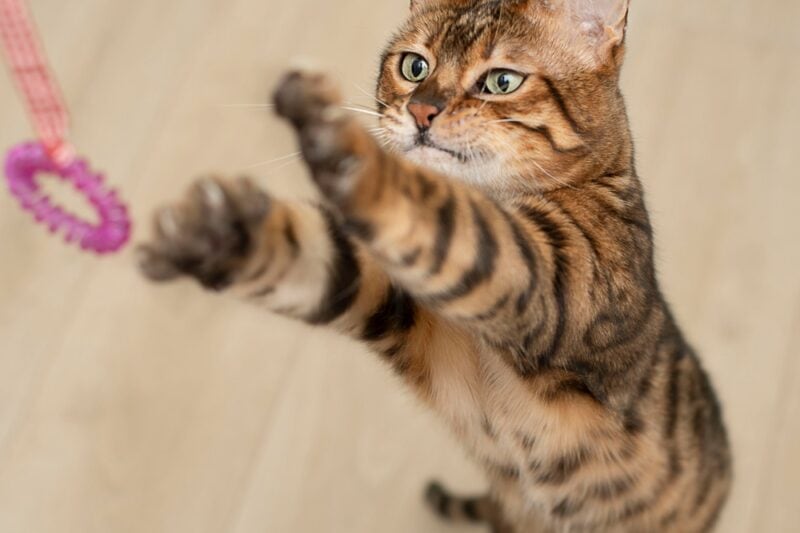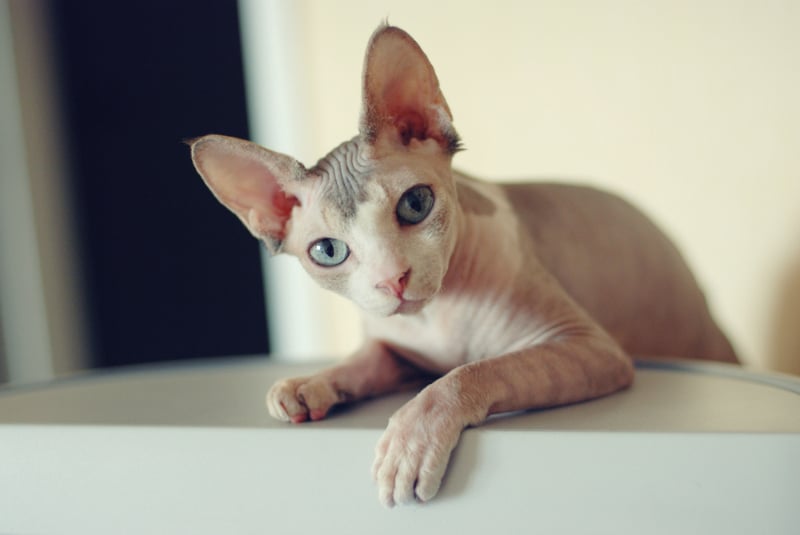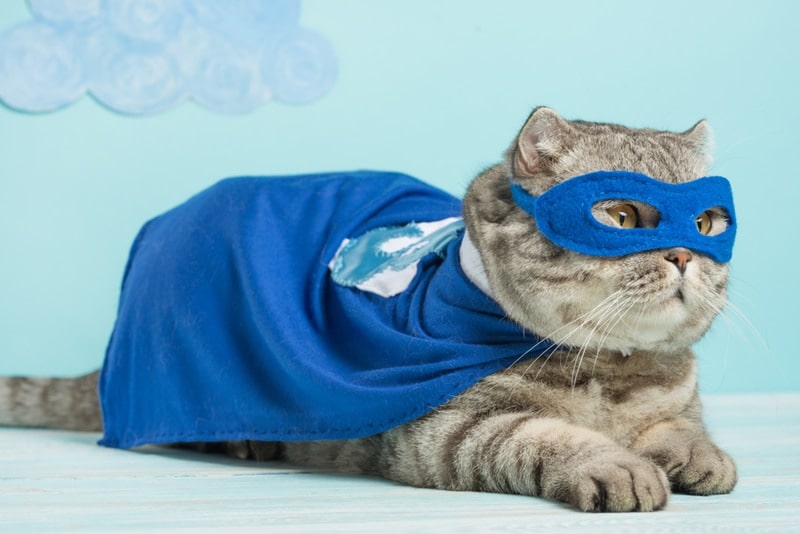Click to Skip Ahead
Deciding on a name for your new cat can be overwhelming. However, if you’re a Marvel Cinematic Universe (MCU) fan, why not look to the movies or comic books to inspire you? Whether you want to pay tribute to your favorite hero or embrace that your cat has the attitude of the villain whom you love to hate, you’re sure to find a name in the MCU for your new kitty. Here are over 170 Marvel cat names for you to choose from.
How to Name Your Cat
If you’re a Marvel super fan, you may already have several names picked out before you even meet your new cat. Another option is to select your kitty’s name based on their sex or physical appearance. Be sure to take a few days to get to know your new pet’s personality and quirks before choosing a name based on these factors.
Marvel Cat Names From the MCU Phase One
For those who weren’t already fans of the comics, the movies in Phase One of the MCU introduced the core members of the Avengers, along with various other memorable characters. This is your category if you’re looking for a classic Marvel name for your cat.
- Thor
- Loki
- Steve
- Bucky
- Tony
- Jarvis
- Natasha
- Black Widow
- Hawkeye
- Phil
- Pepper Potts
- Iron Man
- Captain America
- Jane
- Hammer
- Hulk
- Bruce
- Banner
- Avenger
- Cap
- Fury
- Rhodey
- Maria Hill
- Darcy
- Peggy
- Odin
- Clint


Marvel Cat Names From the MCU Phase Two
Many familiar faces return for Phase Two, along with new heroes and villains. The universe gets a bit more complicated. Does your new cat have a personality that you just can’t figure out? Maybe Phase Two will inspire their name!
- Mandalorian
- Asgard
- Sif
- Falcon
- Hydra
- Sharon
- Star-Lord
- Quill
- Rocket
- Groot
- Gamora
- Nebula
- Drax
- Yondu
- Ronan
- Thanos
- Ravager
- Vision
- Wanda
- Scarlet Witch
- Pietro
- Maximoff
- Klaw
- Ultron
- Strucker
- Ant-Man
- Hank
- Scott
- Luis
- Hope
- Cassie


Marvel Cat Names From the MCU Phase Three
Our heroes are in extra peril as this phase begins. Does life with your new cat already feel fraught with danger? A Marvel name from Phase Three might fit just right.
- Peter Parker
- Spider-Man
- Spider-Cat
- Zemo
- Baron
- T’Challa
- Black Panther
- Wakanda
- Doctor Strange
- Wong
- Ego
- Mantis
- MJ
- Hela
- Valkyrie
- Ragnarok
- Shuri
- M’Baku
- Nakia
- Killmonger
- Ramonda
- Okoye
- Zuri
- Wasp
- Marvel
- Captain Marvel
- Goose
- Flerken
- Chewie
- Carol
- Danvers
- Rambeau
- Aunt May


Marvel Cat Names From the MCU Phase Four
Featuring a mix of films and TV series, this phase expands the list of potential name options for your cat. Memorable villains and heroes, plus a character or two that might qualify as both, are featured. If your cat is a hero one minute and a villain the next, their new name might be here.
- Agatha
- Monica
- Photon
- Ebony
- Karli
- Sylvie
- Mobius
- Miss Minutes
- Yelena
- Shang-Chi
- Ikaris
- Starfox
- Gilgamesh
- Thena
- Sersi
- Kingo
- Phastos
- Ajak
- Kate
- Bishop
- Echo
- America
- Chavez
- Reed
- Marvel
- She-Hulk
- Namor
- Aneka
- Ironheart
- Kang


Marvel Cat Names From the X-Men
From comic books to multiple films, the X-Men are among the most famous Marvel characters. They also offer some of the most exciting Marvel-inspired names for your new cat.
- Wolverine
- Cyclops
- Rogue
- Jean Grey
- Beast
- Iceman
- Charles
- Xavier
- Magneto
- Storm
- Phoenix
- Angel
- Nightcrawler
- Kitty Pryde
- Havok
- Banshee
- Darwin
- Mystique
- Toad
- Sabretooth
- Pyro
- Stryker
- Jubilee
- Quicksilver
- Sunspot
- Blink
- Bishop


Other Marvel Cat Names
From Daredevil and Deadpool to the Agents of SHIELD, here are additional name options for your kitty. Superheroes, villains, antiheroes, and heroic humans are all represented here.
- Daredevil
- Kingpin
- Elektra
- Jessica Jones
- Luke Cage
- Iron Fist
- Coulson
- Agent
- Daisy
- Quake
- Jemma
- Skye
- Wade
- Deadpool
- Domino
- Negasonic
- Weasel
- Sue
- Johnny
- Grimm
- Venom
- Goblin
- Doc Ock
- Fitz
- Melinda May
- Yo-Yo
- Mac
- Deke
- Ruby
- Blade
- Bullseye

Conclusion
After you choose a name for your new cat, use it to register your cat’s microchip or get an ID tag to keep them from getting lost. Also, always call your cat by their name! Research indicates that cats can learn to recognize their own names. Your feline Captain Marvel may never help defeat Thanos, but they can still come running when they hear you call, especially if you sweeten the deal with treats.
Featured Image Credit: Anton27, Shutterstock











